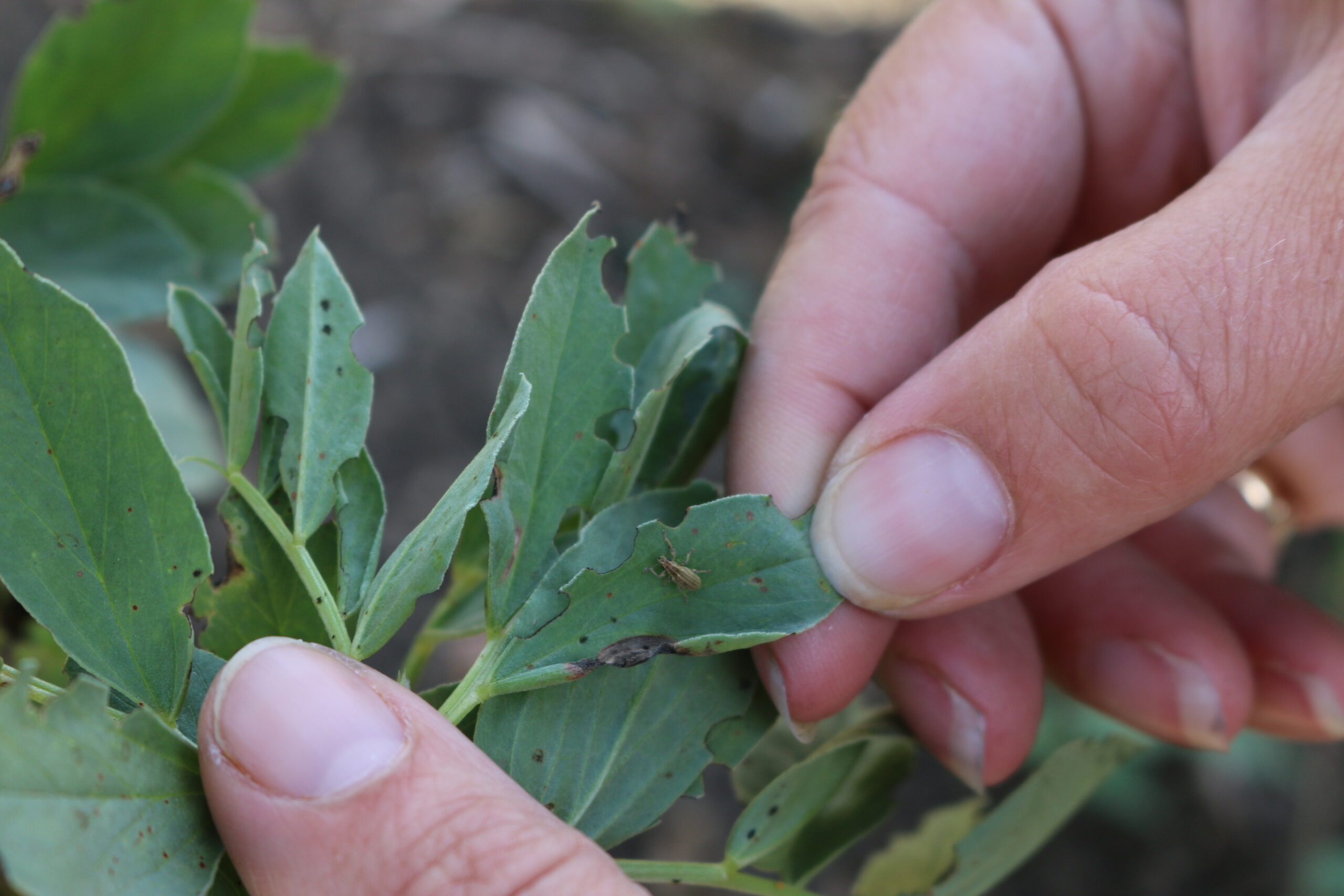The secret life of insects means that we are never really sure what is happening down below the crop canopy, but a Prairie-wide surveillance and forecasting project has been working hard to change that.
If you have not seen it yet, the Prairie Pest Monitoring Network blog includes a weekly update on weather conditions and insect monitoring and movement. Co-funded by Saskatchewan Pulse Growers, this is an important tool for helping pulse growers stay in top of insect risks which may threaten their crop production.
Originally started over 20 years ago, Dr. Owen Olfert, research scientist with Agriculture and Agri-Food Canada, says that the monitoring network was born out of a need to identify and track not just existing overwintering and migratory pest species, but new invasive pest species as well. The network has shown that an increased emphasis on beneficial and predatory species monitoring has increased farmers’ awareness of these helpful species in tandem.
Because insects do not respect provincial boundaries, a Prairie- wide network was necessary to better understand which insect pests are present, where they are moving to, if their natural enemies are moving with them, and what impact weather has on populations and movement. With this coordinated, easy-to-access, online information, the goal is that farmers can be made aware of an emerging pest issue ahead of the often small pest management window.
The Prairie Pest Monitoring Network, an integrated collaboration of scouting, traps, and weather mapping, has shed light on some shifts in Prairie insect population dynamics. One of the most significant lessons learned, Olfert notes, is that over the past 20 years or so, invasive alien pest species, such as Swede midge, cabbage seedpod weevil, and pea leaf weevil, are becoming more frequent and potentially more severe, due to the fact that they seldom migrate together with their natural enemies.

Source: Agriculture and Agri-Food Canada.
A key segment of the blog is the Pest Risk Update. These updates combine annual insect pest survey data from the previous year, in conjunction with current crop and weather information. “Where possible, we employ degree-day models that have been developed to predict insect and crop response to environmental factors,” Olfert says. This layering of past and present data means that researchers can follow trends to better understand the pest dynamics within a farming system, and should offer advanced notice of pest populations, alerting farmers of when to scout and be alert to new threats.
Olfert says that this insect survey data has contributed significantly to the development of robust bioclimatic simulation models for Prairie insects and their natural enemies. “Bioclimatic simulation models are an effective means of representing biological systems and allow research scientists to interact with these crop/weather/ pest systems,” he says.
These simulation models do a good job of summarizing complicated population dynamics. Going forward, Olfert says they allow for the assessment of potential climate change impacts and, in turn, a rapid evaluation of promising management options in the future.

Published June 2018



